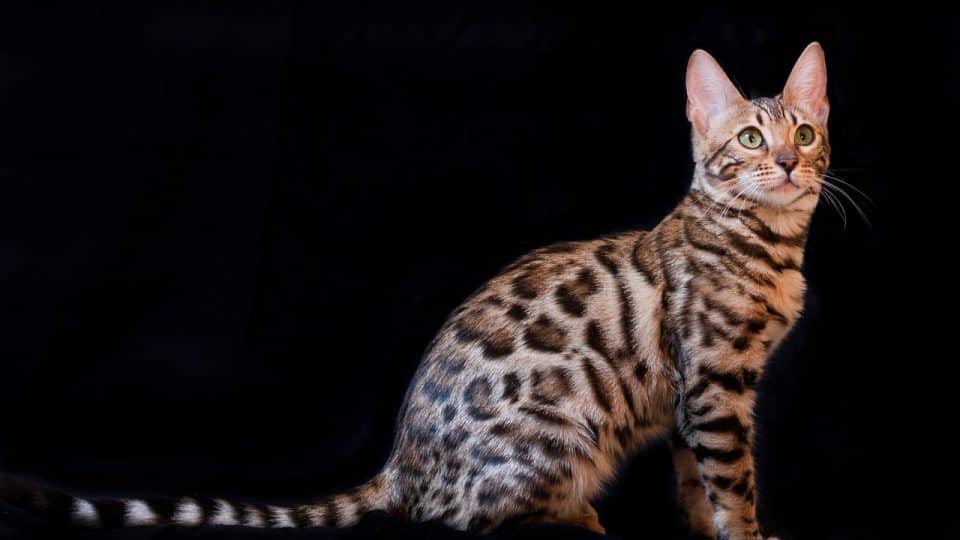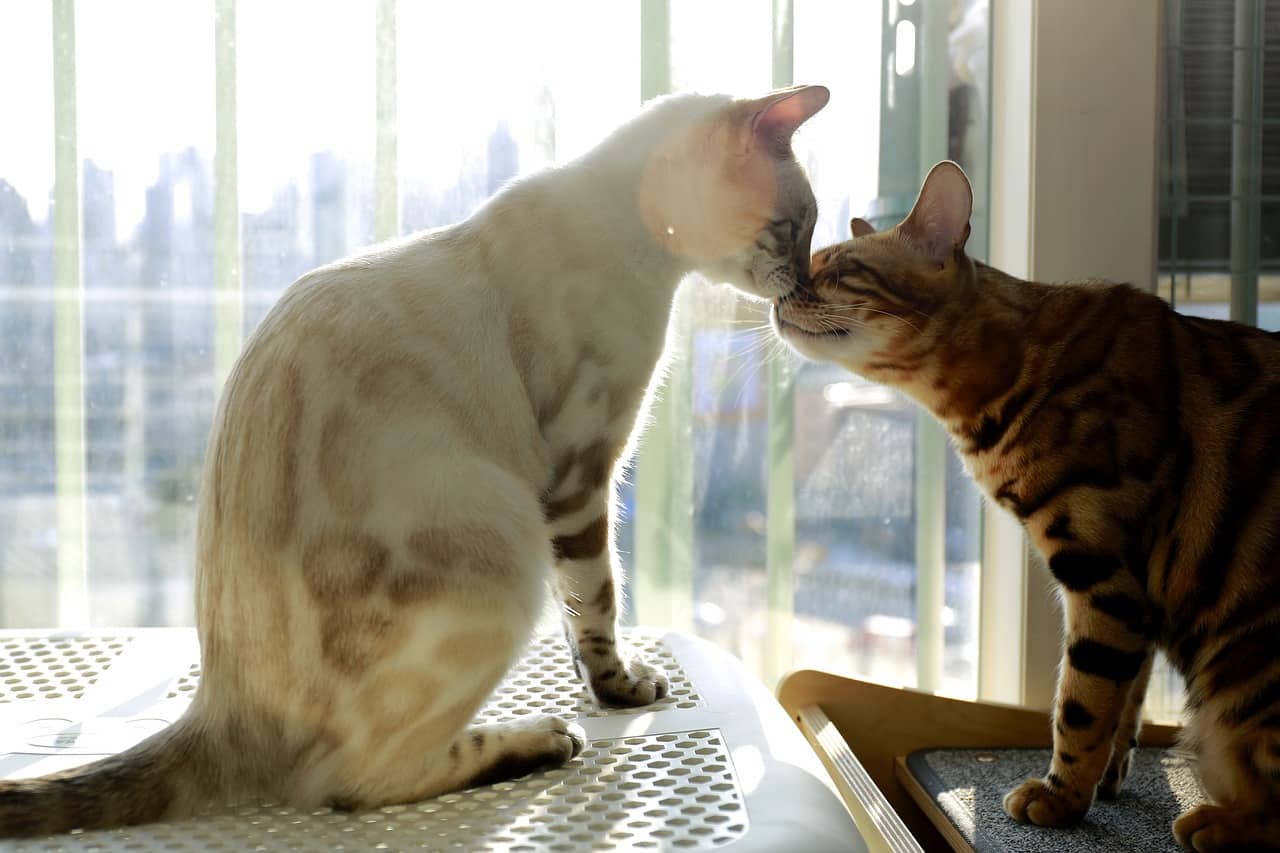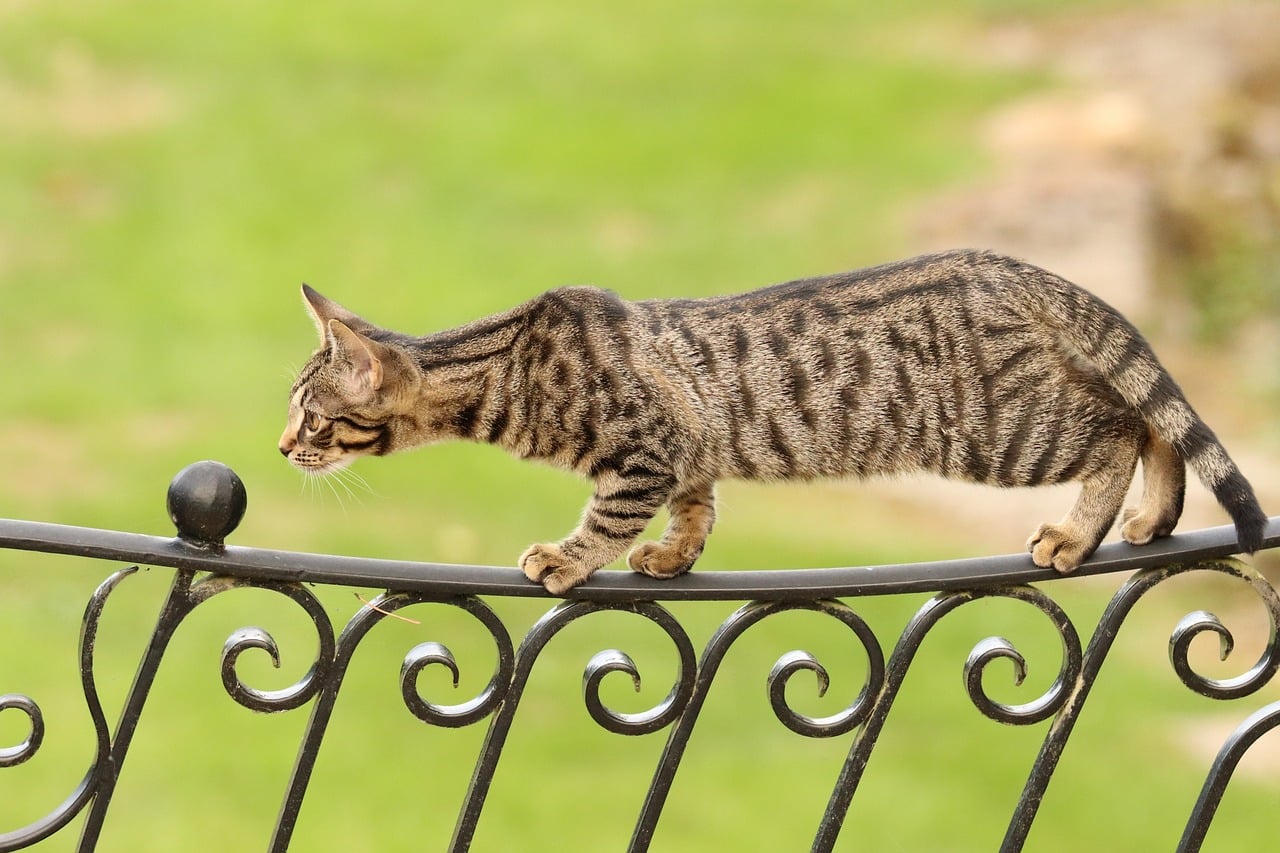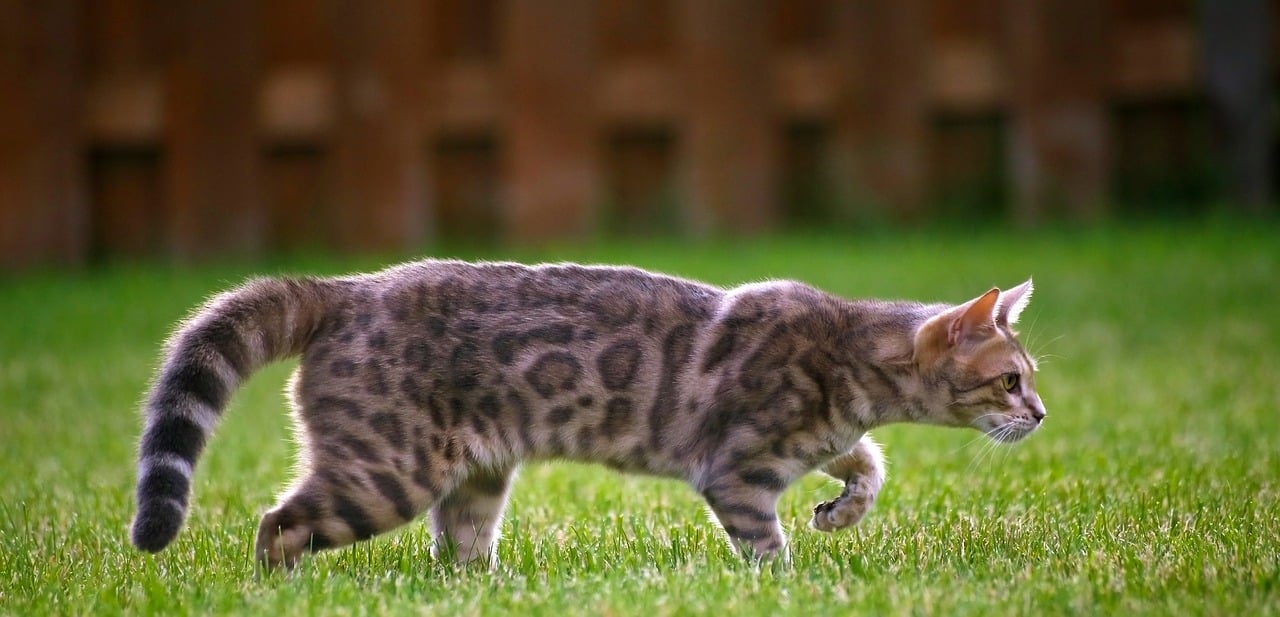If you’re in the market for an affectionate feline who’s more than just a lazy lap cat, you may want to check out the impressive Bengal cat. These cats make terrific companions, but they’ll definitely keep you on your toes.
Here’s the scoop on these feral-looking hybrids.
1. Bengals have wild origins
The Bengal breed was achieved by pairing small, wild Asian leopards with domestic cats, producing the coveted “wild” look that people love—minus the feral aggression part.
Though several crossings of these cats occurred throughout the early 1900s, the real work of developing the Bengal breed was undertaken by Jean Sugden Mill in the 1960s. The breed was officially recognised by the International Cat Association in 1991.
2. They aren’t dainty pets
-
Via Pixabay
While not as large as the giant Maine Coon, Bengals still have a muscular, athletic build. Generally, Bengals can reach a weight of 3.5-7kg (8-15 pounds).
Their coat features spots, rosettes, and marbling, giving them an exotic, jungle cat appearance. In fact, the Bengal is the only domestic cat breed with rosette markings. These spots can be a range of colours, including rust, chocolate, and black.
3. Bengals have loads of energy
-
Via Pixabay
These spirited felines are highly active and almost always “on the move.” They’re typically alert—a trait required by its leopard ancestors for survival.
Bengals love to play with their humans and will vocalise their desire to interact with you. They’ve even been known to engage in negative behaviour—such as hiding jewellery—just to get their owner’s attention.
4. They like water
Bengals have a unique fondness for playing in the water. It’s not unusual for a Bengal to join his owner in the shower.
If you own one of these playful cats, you may want to consider installing a motion-sensitive tap or a pet fountain so they can drink whenever they please.
5. Bengals have “glittery” fur
In the right light, a Bengal’s coat can appear to have an iridescent sheen. This trait, also called “glittering,” makes a Bengal’s fur look like it’s been dusted with golden pixie dust. Most fans of the breed agree this unique trait further enhances the Bengal’s natural beauty.
6. Two are better than one
-
Via Pixabay
Bengals thrive with consistent interaction. These social animals enjoy spending time with their owners, so if you’re away at work most of the day, consider bringing a second kitty into your home. Bengals love having a companion to play with.
One caveat: if you don’t give a Bengal enough attention or activities to keep him occupied, he’ll discover—aka destroy—things in an effort to entertain himself. Just don’t ignore him, and you should be in the clear. Remember, if you can’t be around to give your cat the attention they deserve you can find a wonderful local cat sitter on Rover.com who’ll be more than happy to step in while you’re away!
7. Bengals are highly trainable
Bengal cats are an incredibly smart breed. They like to learn new tricks, and they can be clicker trained to perform simple commands like retrieving toys. They can even be trained to walk alongside their owners on a lead!
Keep in mind: while they may behave like dogs, Bengals are still felines. Their necks can’t handle the kind of pressure you would use while lead-walking a dog. Instead of a regular dog lead, you can use a walking jacket or harness specially made for a Bengal cat’s unique build.
These cats crave mental stimulation, so it’s important to challenge their minds with things like interactive food puzzles and toys.
8. Vertical space is a must
-
Via Pixabay
For a Bengal cat, vertical space is where it’s at. They’re talented climbers and jumpers, and they love to explore high places. This becomes a significant piece of information when kitty-proofing your home for safety.
9. Bengals are natural hunters
-
Via Pixabay
A Bengal’s predatory instinct runs deep. These cats are avid and skilled hunters. Just like their leopard ancestors, Bengals like to hunt for fish—so watch out for the fish in your aquarium!
Their high prey drive makes them less than perfect pets for households with smaller animals like hamsters, bunnies, or guinea pigs. Something to keep in mind if you’re considering bringing one of these cats into your home.
If you’re ready to welcome this one-of-a-kind cat into your heart, there’s no doubt you’ll be reciprocated with endless affection and memorable moments. While they might not be a low-maintenance breed, they’re certainly the furthest thing from being a boring one.








